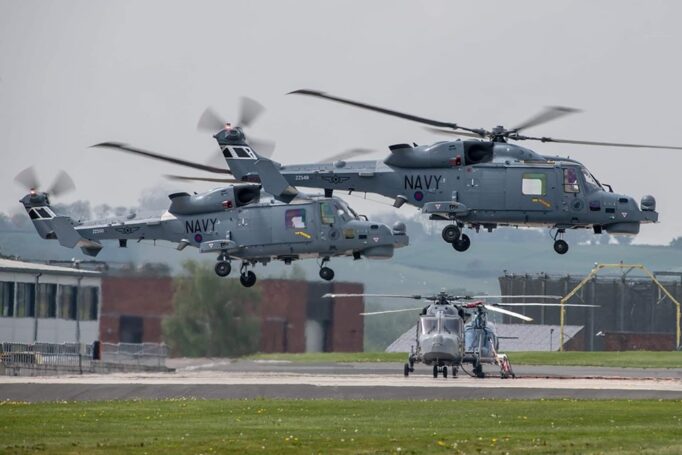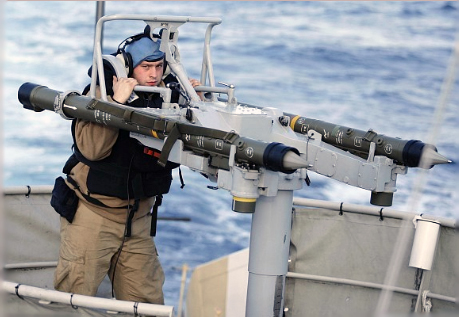The worrisome situation that continues to intensify across the Indo-Pacific theater – India-China border, Taiwan Straits, East China Sea, South China Sea – is subverting diplomatic efforts to restore peace and order, and escalating the prospects of an armed conflict due to clashing core interests of the great powers between China and the US.
While our interdependent foreign policy seeks to push the peace envelope as the rational path towards diplomatic settlement for Human and Ecological Security, we, at the same time, are preparing for the worst, foremost of which is exemplified by the modernization of the Armed Forces.
Our defense buildup has been hobbled by:
- fund diversions for civil defense due to the pandemic and economic disruptions;
- lack of government cohesion to remove legal, administrative, attitudinal and behavioral obstacles hindering speedy and trouble-free acquisitions;
- lackadaisical application of the National Security Policy and Strategy; and
- the continuing failure to allocate a minimum of 2% of GDP for the AFP’s annual modernization and sustainment (parts, repairs, maintenance) needs.
We must resolve these ASAP. All those factors are within our control. Diplomacy must be supported by credible deterrence. There is no excuse for our continued negligence to exercise our duty and responsibility to defend ourselves, protect our people, secure our resources, and uphold national honor.
The government should use a portion of our foreign exchange reserves now reportedly at around US$110 billion to offset the General Appropriation Act’s (GAA) diversion of modernization funds for social amelioration as well as accelerate the building of defense infrastructure and acquisition of air-sea-land weapons, systems and munitions.
If necessary, the National Security Council (NSC) and the Legislative-Executive Development Advisory Council (LEDAC), both chaired by the President, should quickly shepherd the passage of a law warranting the one-time use of US$10 Billion under “emergency conditions” on top of the annual GAA budget. National security imperatives demand it in the interest of time and for our national survival. These additional funds should be employed for:
- manpower buildup, doctrinal training, and interoperable operations;
- radar, integrated battlefield management systems and tactical data links;
- new bases and islands converted into forward operating combat outposts;
- purchase of optimal quantities of platforms, weapons and munitions; and
- annual sustainment funding to maximize the useful life of capital assets.
Our new platforms, weapons and munitions need to have the quality, quantity, lethality, speed and range to effectively compete in 4th generation warfare, leaving our allies and defense partners to engage in 5th gen warfare. Presently, our assets are qualitatively inadequate and insufficient in number to make a difference.
We need to have sufficient stocks in our inventory – manned and unmanned– to offset the qualitative and numerical advantage of potential adversaries, and to sustain us for at least six (6) months while likely fighting alone for our survival before our allies and defense partners manage to reinforce us.
Furthermore, our new assets on order (and in the pipeline pending approval) will take time for delivery, hence, procuring still in-service assets would be the practical thing to do to augment our brand-new assets given the probability of armed conflict amongst the great powers in the near term, and to lower the cost average as well.
For example, Brazil has reportedly the most modernized version of the F-5E Tiger II, known as the F-5EM. It has 4-4.5 generation avionics. Upgrades were done by Embraer from which we sourced the Super Tucanos. South Korea also has its own upgraded version, the KF-5E/F made by KAI, which had supplied us our FA-50s.
I assume that the cost of procuring these potent upgraded 4th-4.5 gen F-5’s from either country would be much cheaper per unit than either a brand new FA-50 or the PAF’s future multi-role fighter. Make no mistake, I do not mean foregoing the procurement of more FA-50s and the MRF. On the contrary. I mean augmenting, to add quantity with sufficient warfighting qualities, to back up our new jets and future fighters.
As such, we could in the meantime acquire 1 squadron each of the upgraded F-5s from Brazil and South Korea, or 48 aircrafts, since both countries are replacing them with new fighter models. What is critical are the avionics, long range, and penetrating capability of the air-to-air and air-to-surface/ship missiles apart from their fuselage integrity and engine status.
In fact, we could work out package deals with both countries. We are actually buying 18 more brand new Super Tucanos from Embraer. And we could buy at least 12 more FA-50s from KAI to complete a squadron. Target the completed deliveries of new and used by 2024.
As for the multi-role fighter program, be it from Sweden or USA, the ideal would be to negotiate a package deal for a bundled capital asset procurement to gain the most bang for our buck. We should apply the same method to other major supplier countries like Israel, Indonesia, Japan, Australia and Poland.
For example, if we select Sweden’s Gripen (at least 1 squadron), we could negotiate a package deal to include Visby stealth corvettes, Gotland submarines and Rbs-15 Gungnir SSMs. If the US F-16V Block 72 (at least 1 squadron) is selected, we could negotiate an advantageous package deal to include HIMARS, Naval Strike Missiles, P-3C Orions and precision strike weapons and munitions.
More importantly, whoever we buy defense assets from, we should enlarge the scope of our negotiating envelope to include strategic economic diplomacy. We must cultivate new trading partners and expand trade agreements with existing ones. If our economy is held hostage or crippled by hostile powers, there may be nothing to defend.
It is noteworthy that the Philippine Navy is awaiting delivery of nine (9) sea-going Shaldag Mk V interceptors from Israel equipped with the NLOS SSM for completion, hopefully, within the next two years. It now has six (6) Spike ER SSM-equipped multi-purpose assault crafts (MPACs) for special operations in internal waters, a modest but good start.
Awaiting funding are six (6) OPVs to be built by Leonard (formerly Austal) in-country; two (2) new anti-submarine warfare (ASW) corvettes from South Korea plus two (2) more Pohang corvettes for donation; two (2) more Landing Docks from Indonesia; and (2) new Scorpene submarines from France. Developing a formidable submarine force – at least 6 – should be at the top of the list.
For the Coast Guard, we could exert efforts to negotiate a package deal with Japan for at least three (3) Hayabusa-class; four (4) more new 94-meter or longer Coast Guard OPVs with maritime safety capability, in addition to the first two presently being built for us, and at least three (3) P-3C Orion maritime defense aircraft.
The Philippine Air Force (PAF) is focused on at least a squadron (24 jets) of multi-role fighters; 32 more S-70i Blackhawk helicopters; 18 more Super Tucanos; 5 more C-130H/J heavy transports; at least 10 attack helicopters, and at least 3 P-3C Orions.
It is assuring to know that the AFP has invested in air defense systems like the SPYDER; standoff shore-based missile systems like the BRAHMOS; and a growing number of UAVs for ISR and EW in aid of all three service branches. It should however also place top priority on a quantum of cost-effective loitering, as well as precision guided, munitions to sustain its warfighting capability.
For example, Excalibur, Paveway, JDAMS and APKWS for precision guided munitions; and mini-Harpy, Harop, Firefly, Skystriker, Warmate, and Switchblade for loitering munitions fired from any platform.
As for our existing defense assets, there is much that we can do to improve their lethality, interoperability and extend the range of their potency. For example, we should accelerate the installation of the remaining weapons systems and munitions delivery for the two (2) Rizal-class frigates, particularly its VLS multi-purpose missile system, SSM missile system and CWIS. Additionally, the twin-missile Mistral Sinbad manual launchers should now be replaced with two 6-missile Sadral Mistral automated launch systems.
The combat systems of the three (3) Gregorio del Pilar frigates should be upgraded to that of the Rizal-class. That should bring up the total to 5 ships with the same systems and firepower. One (1) AW-159 Wildcat anti-sub helicopter (armed with Blue Shark torpedoes, NLOS SSMs) for each ship would maximize deterrence.

Philippine Navy Wildcat Helicopters. Photo Credit: Westleigh Bushell of Spotter Magazine.
The three (3) Apolinario Mabini-class patrol ships and Mariano Alvarez-class Cyclone should be upgraded for anti-submarine warfare (ASW), and mine counter-measure (MCM) warfare, led by the Conrado Yap Pohang-class corvette. Five (5) ASW-MCM ships operating in our SLOCs would be reassuring.

Sadral 6-Missile Mistral automated launch system used by the Royal Thai Navy.
Our two (2) Tarlac-class landing docks and the Coast Guard’s five (5) largest vessels should be appropriately armed with defensive weapons and systems –remote weapons systems, missiles, loitering munitions– against a well-equipped adversary.
The LDs ought to carry (1) AW-159 Wildcat and (1) AW-109 light gunship on board, and two guided missile MPACs in its well decks. The Coast Guard vessels could carry MD-500 light gunships of the PAF on board.
For our Army-Marines forces, let me cite some examples that need fast-tracking:
- ROROs to transport combat elements to the forward edge of their battlespace;
- Brahmos hypersonic SSM and Naval Strike Missile;
- MLRS such as HIMARS;
- additional Spyder air defense batteries;
- unmanned attack drones, suicide drones; precision-guided munitions.
Deployment to selected islands and offshore facilities in strategic areas nationwide converted into EDCA forward operating combat outposts, and capable of repositioning themselves quickly from island to island to defend our SLOCs / EEZ and to interdict / degrade incoming hostile forces.
Special mention for HADR: we need sufficient air and naval transport assets to operate in our high risk environment impacted periodically by typhoons, floods, earthquakes, volcanic eruptions and tsunamis, such as:
- SAR heavy helicopters (Russia)
- SAR amphibious aircraft (Canada)
- SAR vessels, ROROs, Hospital ships (locally built)
- DRRO, Medical and Engineer units (PA, PN, PM, PAF, PCG Ready Reserves).
We should prioritize local manufacturing in joint venture with leading global defense contractors. Defense industrial parks in key locations in the Philippines producing dual-use products for the civilian and military-security markets will spur national development and sustain national defense efforts.
Other fund-raising and financing initiatives to buy and sustain our defense needs to be stipulated in the National Security Strategy, including the following:
- Sale of long-term bonds in capital markets –local and international;
- Lease of government land for technological, commercial-industrial development; and
- Lend-lease arrangements with allied nations for critical defense requirements.
If we do not demonstrate our resolve to uphold our national interests, there is no justifiable basis to expect our allies and defense partners to do so for us. They will place their own national interests above all else. They will not help a country unwilling to defend itself.
Our interdependent foreign policy places emphasis on being a “friend to all, enemy to none.” While our constitution bars us from waging war, it expects us to defend ourselves against hostile threats –foreign and domestic. In that case, we should do everything we can to wage peace but, at the same time, prepare ourselves for the worst outcomes.
That is what every mature and responsible nation does to survive and progress.
About the Author:
Rafael Alunan III is the Chairman of the Philippine Council for Foreign Relations (PCFR). He was the former Department of Interior and Local Government (DILG) Secretary under the Pres. Fidel V Ramos administration (1992-1996).
